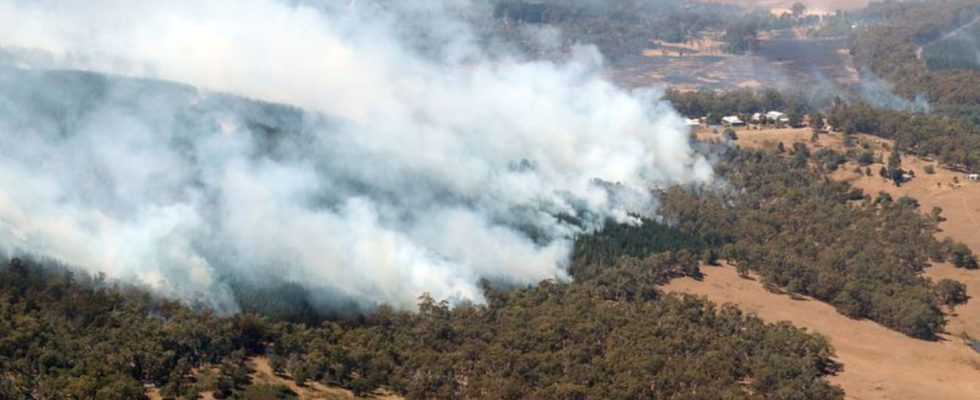Heat wave
Bushfires continue to threaten southeast Australia
Firefighters continue to battle a large bushfire in the western Australian state of Victoria. photo
© David Crosling/NEWS CORP POOL via AAP/dpa
The bushfires are not giving southeast Australia any peace. The danger of the past few days seems to have been partially averted, but the authorities are concerned about the upcoming summer heat.
There is still no all-clear for the bushfires northwest of the Australian metropolis of Melbourne. The fire brigade has now managed to stop the fire from spreading for days near the city of Ballarat in the southeast Australia’s rampage was slowing down, local media reported. However, some fires are far from under control and could continue to burn for weeks, the authorities in the state of Victoria said.
According to the AAP news agency, more than 500 firefighters are currently battling the flames west of Ballarat. Around 17,000 hectares of land have already been devastated and six residential buildings have been destroyed.
In the area around the wooded community of Mount Lonarch, emergency services called on remaining residents to immediately seek shelter inside buildings – it was now too late to flee the area. The fire is out of control and is threatening homes and lives. “Starting now would be fatal,” the emergency service urgently warned. In some surrounding areas, the danger from the fires was now considered reduced and residents were allowed to return to their homes.
Residents are warned
However, for several towns there was a warning from civil protection that it was still not safe to return. The authorities were also concerned about the weather forecast, which predicted high summer temperatures of up to over 40 degrees for the coming week, accompanied by strong gusts. The fire-accelerating conditions should be particularly unfavorable on Wednesday.
Victoria’s Emergency Management Minister Jaclyn Symes urged residents to be prepared. “Don’t make your decisions until it’s too late.” But even without the extreme weather forecast for Wednesday, it would still take at least three weeks until the fires are completely extinguished. According to Symes, emergency responders are currently rotating on duty to prevent exhaustion. “We know our first responders will be out there working for many days to come and we want to ensure we are taking care of their health and well-being.”
Authorities had warned that the Australian spring and summer could be the most violent bushfire season since the devastating “Black Summer” of 2019-2020. At that time, weeks of bushfires devastated more than twelve million hectares of land, and countless animals died or were displaced.

